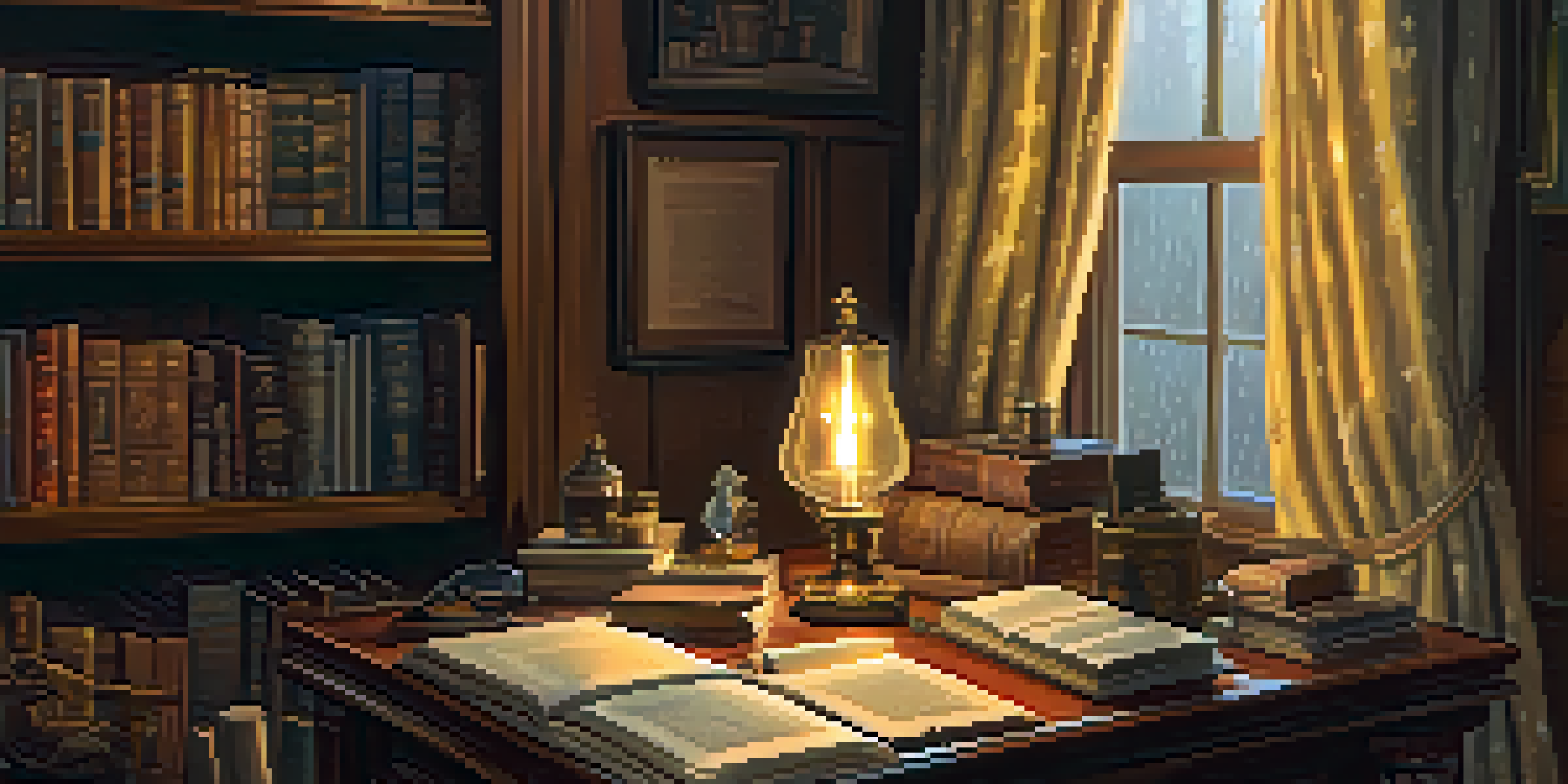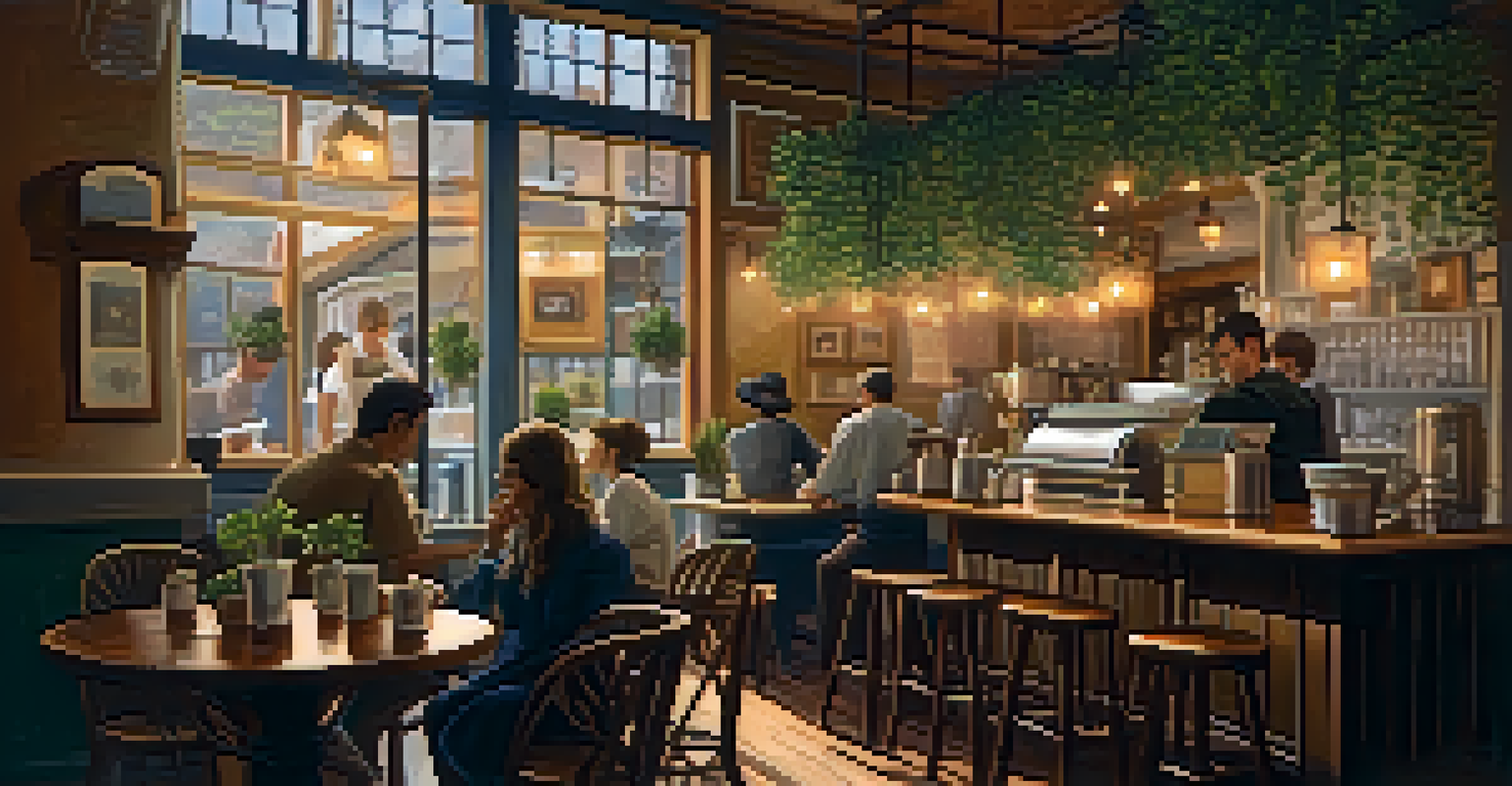Set Design and Art Direction: Crafting Immersive Film Worlds

Understanding Set Design: The Foundation of Film Aesthetics
Set design is the backbone of film aesthetics, shaping the viewer's experience. It involves creating a physical environment that reflects the story's mood and era. A well-designed set provides essential context, allowing the audience to immerse themselves in the film's world.
Set design is like a visual language that speaks to the audience's emotions and experiences.
Think of set design as the canvas on which the film's narrative is painted. Just like an artist chooses colors and textures, set designers select materials and layouts to evoke specific emotions. This meticulous attention to detail can transport viewers to different times and places, enhancing their connection to the story.
For instance, the opulent sets of 'The Great Gatsby' vividly illustrate the excess of the Roaring Twenties. In contrast, the stark, minimalist design of 'Room' emphasizes the confinement and isolation of its characters. Each choice in set design contributes to the overall storytelling experience.
Art Direction: Bridging Vision and Reality in Film
Art direction plays a crucial role in translating a director's vision into tangible elements on screen. It encompasses everything from colors and textures to the arrangement of props and furniture. Skilled art directors collaborate closely with set designers to ensure a cohesive look that aligns with the film's themes.

Imagine an art director as a conductor, orchestrating various design elements to create a harmonious visual experience. They must consider how each piece contributes to the narrative and how it interacts with lighting, costumes, and cinematography. This synergy is vital for crafting an immersive atmosphere.
Set Design Shapes Film Experience
Set design serves as the canvas for a film's narrative, immersing audiences in its emotional and contextual landscape.
Take 'Blade Runner 2049,' for example. The art direction brilliantly combines futuristic elements with a gritty, dystopian aesthetic, creating a believable yet otherworldly environment. Such careful curation invites viewers to explore the film's complex themes on a deeper level.
The Role of Color Schemes in Setting the Mood
Color schemes in set design are essential for establishing the film's mood and tone. Each color evokes specific emotions, influencing how the audience perceives a scene. For instance, warm colors like reds and oranges can create feelings of passion or tension, while cooler tones can evoke calmness or sadness.
Art direction is the heartbeat of a film, breathing life into the vision and making the unreal real.
Consider the use of color in films like 'Amélie,' where vibrant hues reflect the whimsical nature of the protagonist's world. This strategic use of color not only enhances the visual appeal but also deepens emotional engagement, allowing viewers to connect with the story on a more profound level.
By understanding the psychology of color, set designers can effectively guide audience reactions. This thoughtful application of color ultimately contributes to the film's narrative, making it an integral part of the storytelling process.
Creating Authenticity: Research and Historical Accuracy
Authenticity in set design often requires extensive research, especially for period films. Designers delve into history, studying architecture, fashion, and everyday objects to accurately represent the time period. This commitment to detail ensures that the film resonates with audiences seeking realism.
For instance, in 'Dunkirk,' the meticulous recreation of World War II-era settings transports viewers to the front lines. By carefully replicating historical details, the filmmakers create a sense of immersion that enhances the narrative's urgency and emotional weight.
Collaboration Enhances Visual Storytelling
The synergy between set designers, directors, and cinematographers is crucial for creating a cohesive visual experience that supports the film's story.
Such dedication to authenticity not only enriches the viewing experience but also educates audiences about different eras and cultures. This fusion of art and history underscores the power of set design in storytelling.
The Impact of Set Design on Character Development
Set design does more than establish a backdrop; it can significantly influence character development. The environment in which a character exists often reflects their personality, struggles, and growth. For example, a cluttered room might suggest chaos in a character's life, while a meticulously organized space might indicate control.
Consider the character of Sherlock Holmes in 'Sherlock.' The design of his cluttered, Victorian apartment not only showcases his intellect but also hints at his chaotic mind. Each object tells a story, providing insight into his character without a single word spoken.
By creating spaces that resonate with the characters' journeys, set designers enhance the audience's understanding of their motivations and conflicts. This interplay between character and environment enriches the film's narrative.
Collaboration: Set Designers, Directors, and Cinematographers
The magic of set design is often the result of seamless collaboration among set designers, directors, and cinematographers. Each party brings a unique perspective, ensuring that the visual elements align with the film's overall vision. This teamwork is essential for achieving a unified aesthetic that enhances storytelling.
For example, during pre-production, designers and directors collaborate to determine how sets will serve the narrative. Cinematographers then consider how lighting interacts with these spaces to create desired effects. This multi-faceted approach guarantees that every visual element contributes to the film's emotional impact.
Technology Transforms Set Design
Emerging technologies like VR and AR are revolutionizing set design, allowing for more immersive and dynamic storytelling in film.
When all parties work in harmony, the result is a captivating visual experience that draws audiences into the story. This collaboration highlights the importance of communication and shared vision in the filmmaking process.
Future Trends in Set Design and Art Direction
As technology evolves, so do the practices of set design and art direction. Virtual reality (VR) and augmented reality (AR) are beginning to influence how filmmakers create immersive environments. These technologies offer new possibilities for storytelling, allowing filmmakers to explore virtual sets that were once unimaginable.
For instance, films like 'The Mandalorian' have pioneered the use of LED screens for real-time backgrounds, creating a more dynamic interaction between actors and their environments. This innovation not only enhances realism but also reduces the need for extensive location shoots.

Looking ahead, we can expect even more integration of technology in set design, pushing the boundaries of creativity. As filmmakers embrace these advancements, the landscapes of film worlds will become increasingly immersive, captivating audiences in new and exciting ways.